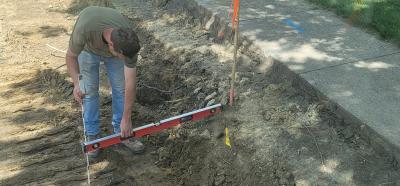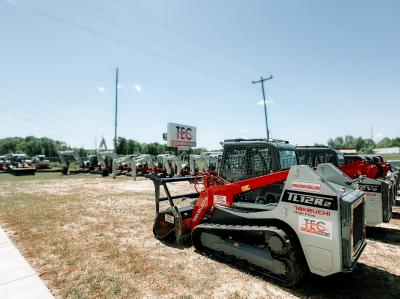The latest school to open its doors in Tuscaloosa, Ala., is teaching students both academic and job skills, while also providing a safe place to gather during emergencies.
A ribbon cutting was held for Tuscaloosa Career & Technology Academy (TCTA), a 120,000 sq. ft. (11,148 sq m) $25 million dollar facility that includes six interconnected buildings and a shelter that has its own power supply, backup generator and HVAC system.
“Watching the dream unfold was amazing,” said TCTA principal Kathleen Hughston. “It was an overall sense of rejuvenation, to say the least. Although there were glitches along the way, and even adjustments currently being made, the facility is one the Tuscaloosa community should be extremely pleased and proud to support. The response to the new school has been very positive from all perspectives, including business and industry, students and parents.”
Located on Martin Luther King, Jr. Boulevard — the former site of Westlawn Middle School — TCTA provides enrollees with various college and career prep courses of study, using state-of-the-art technology and equipment. Described as a “working building,” TCTA features classroom walls made of sheetrock so they can be torn down and rebuilt easily.
The revamped, skill-based curriculum focuses on finance, engineering, transportation, building services, media production, cosmetology, public safety, human services and medical sciences. To help students better train, a mock fire department was constructed on campus, along with a simulated hospital ward, complete with life-size mannequins for training purposes.
Cody Strickland, superintendent of construction manager Harrison Construction Company Inc., said work began in spring of 2011, starting with demolition work.
“This involved asbestos abatement, moving the city school board out of the building, then doing the demolition with the use of large excavators and dump trucks,” said Strickland. “We also had to build an underground retention system to control storm water run-off, and had to construct a building pad for the new school.”
Major equipment used at the job site included John Deere excavators, John Deere backhoes, lulls and Caterpillar skid steers. Materials included concrete, steel, brick, metal siding and metal roofing.
“Carrying out this project was actually fairly easy, because everything was coordinated very well with the architects and the contractors on site,” said Strickland. “The biggest challenges were the schedule and the safe room. The most difficult task was scheduling the storm shelter with the adjoining building to make them all come together at different stages.”
TCTA’s campus is far from conventional, with a modern design that suits students’ varied needs. The shop areas are built with mostly CMU block and metal trusses and include the automotive shop/classroom, masonry shop/classroom, electrical shop/classroom, welding shop/classroom and carpentry shop/classroom. The classroom wing is a two-story building made from steel on metal deck and concrete.
Hughston believes the new structure comes at the right time.
“The previous building was built in 1969. The technological demands of the equipment needed to properly prepare students for the transition to college and or careers necessitated costly facility updates. Additionally, the old location did not provide space to grow new programs and expand current programs. With the passage of PLAN 2020, the timing seemed right to initiate a facility that created an environment that not only met the needs for preparing students for post-secondary programs for today, but would also have the flexibility to adapt to the ever-changing needs for the future.
“In order to reflect the overall idea of college and career readiness outlined in PLAN 2020, it was important to not only create programs that met these needs, but also a facility that mirrored this 21st-century approach to ensuring students were adequately prepared with the skills needed to transition to that next step, whether a four-plus year, two-year college path, an apprenticeship program or directly to work,” said Hughston.
TCTA serves students, grades nine through 12, ages 14 through 19, from all three of the Tuscaloosa city schools’ high schools. Students from the Tuscaloosa county schools also are welcome to attend.
Hughston said considerable research was done to ensure the overall effectiveness of the facility, including adequate classroom, lab and storage. Each classroom and lab area is visible from the hallway, allowing business, administrators and visitors to experience what is happening within the classroom without having to interrupt the learning process. The hallway visibility is a means to introduce students and guests to program areas they may not have been familiar with until now. In addition, the courtyard has a spacious outdoor classroom area, equipped with sound and video technology that allows multiple classes to simultaneously benefit from various presentations and demonstrations.
“TCTA also has its own fire house, equipped with its own fire truck, used in conjunction with the Public Safety and Fire Science program. This program is sponsored by the partnership with the Tuscaloosa Fire Department, and is already recognized as a flagship program throughout the state,” said Hughston. “Additional features include a state-of-the art animation, film, digital media design suite, a health science hospital simulation room, a custom-created drafting design lab, a spa and salon suite that includes instruction in hair, nails and therapeutic massage and an eight-station automotive technology lab with drive-through design.”
Hughston is particularly impressed with the school’s safe room, which reportedly can accommodate up to 800 people. The structure may be open to the public during severe weather, although the exact details are still being worked out.
“The discussions for needing such an area were initiated after Enterprise High School was hit by a tornado, killing eight students. The April 27, 2011 tornado reinforced the need,” Hughston said. “The event hall is a multi-purpose room that serves as a storm shelter that will withstand wind gusts up to 250 mph. The walls are reinforced 15 inch concrete walls secured on an eight-foot concrete slab.
“The ceiling is supported with concrete trusses, like you’d see in interstate underpasses, with concrete slap atop the roof area,” said Hughston. “The doors and windows have protective closures that further secure the facility. Within the security of these walls are restrooms and a serving area for food. There’s a full-sized kitchen area adjacent to the safe room, should there be food service needs due to extended shelter stays.”
“We had a great opening, but we are continuing to perform work on the school to meet the needs of the new programs,” said Jeff Johnson, executive director of facilities of Tuscaloosa city schools. “The school was designed to be flexible, so that changes or new programs could be added. Even the existing programs are going through a change from both the curriculum and equipment perspective.”
The facility was built as a working building with exposed piping, electrical and fire sprinklers, according to Johnson. This gives the students a chance to see actual installed equipment that typically would be hidden from view. In addition, since each instructional space has specific needs, they had to be custom designed. This includes cooling/heating, fresh air requirements, electrical and furniture requirements.
WAR Construction of Tuscaloosa, Ala., served as the trade contractor for the general package on the project. The work included all building structures, CMU wall construction, brick veneer exterior with metal stud construction, metal roof trusses and roof system, landscaping and irrigation, bulb tees and erection, installation of doors, tubular daylighting devices, specialties, signage, blinds and furnishings.
“WAR began work once the building pads had been established on site,” said Andrew Jackson, WAR vice-president and project manager. “The main challenges involved working with all the other trades as one, in order to complete the job on time.”
Despite owner delays and weather issues, Jackson said it was rewarding to be involved in a project of this nature.
“This is the first tech school in the state of Alabama. It offers students everything from welding to singing R&B in the studios.”
TCTA replaces the former Tuscaloosa Center for Technology, which opened more than four decades ago. A countywide one-cent sales tax initiative was the main source of funding for the new academy, which is part of the Tuscaloosa city school system.
Whether they’re planning to attend college or enter the workforce after high school, TCTA students are encouraged to get hands-on experience in their chosen field. Tuscaloosa City Council members, Alabama Department of Education members and other elected officials were among the more than 300 in attendance for the academy’s official opening.
“This school is definitely a pacesetter for our state, the southern part of the U.S. and even the nation,” said Dr. Philip Cleveland, director of the Office of Career and Technical Education Workforce Development at the Alabama Department of Education. “I have been in many parts of the nation, and I can tell you, you have a training facility here that holds a candle to anything I’ve seen.”
More than 600 students enrolled in courses at TCTA for the school year that began in August 2013. For administrators, the new year is filled with opportunity.
“Preparing students for the next step, whether college or career, is the ultimate goal,” said Hughston. “By aligning the program offerings with the identified workforce needs for the next 15 to 20 years, the hope is students will have the skills they need to be successful and productive citizens of the community. By meeting the demands of our workforce, as well as helping students find their fit for the future, the academy provides a ’win-win’ scenario for growing and building a relevant and secure workforce and a prosperous economy.”
Today's top stories















